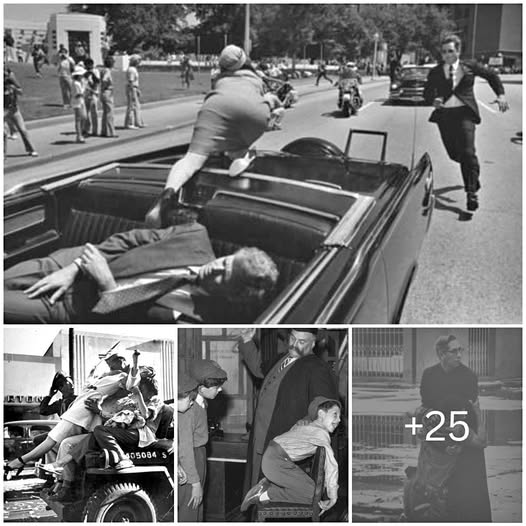Great photographs have an in-built emotional appeal. Even if you have not seen them, there’s some sort of stimulating content that would stir your interest. Some of these snaps are remarkable just because the shutterbug behind the lens was present at the right place and time. It could be anything. People with pets, people against cityscapes, ordinary indoor scenes of nondescript homes, a celebrity caught off guard, you name them.
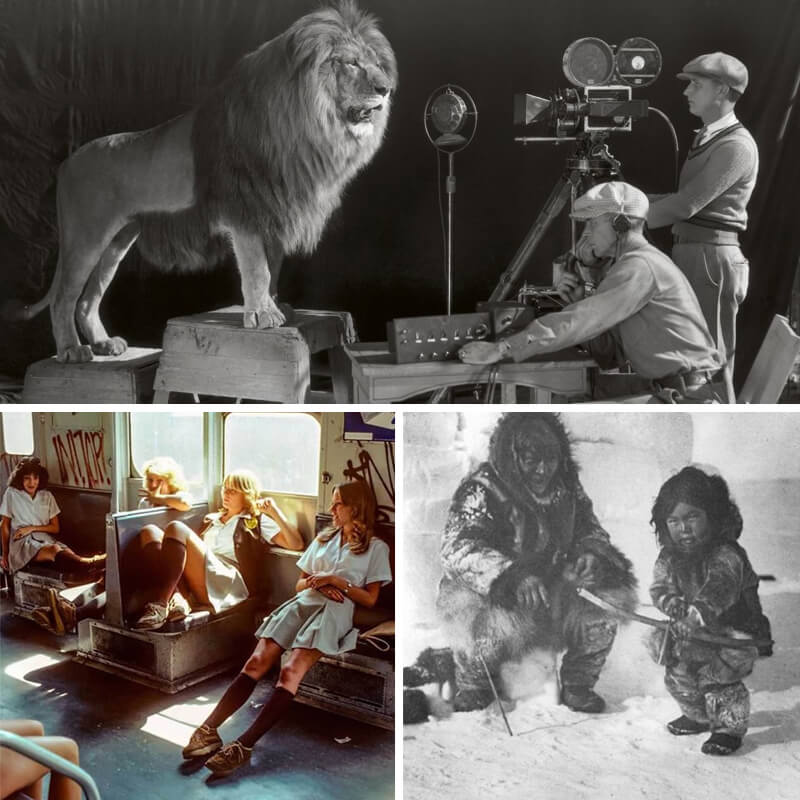
What makes a photo truly remarkable and historic is its inherent ability to define a moment, a landmark event that changed the course of history, or reify an entire era when all the camera operator wanted was to capture a moment. Browse through our gallery of 50 outstanding photos that tell 50 different stories.
Next: It was one big step toward ending racial inequality.
Fred Rogers Takes a Stand to End Inequality
In the late 1960s, the US legally ended racial segregation. However, people of color still encountered inequality in society, which was uncalled for. Things took a significant turn when in a pivotal episode of Mister Rogers’ Neighborhood on May 9, 1969, Fred Rogers, the late author and host of the show, took a stand.
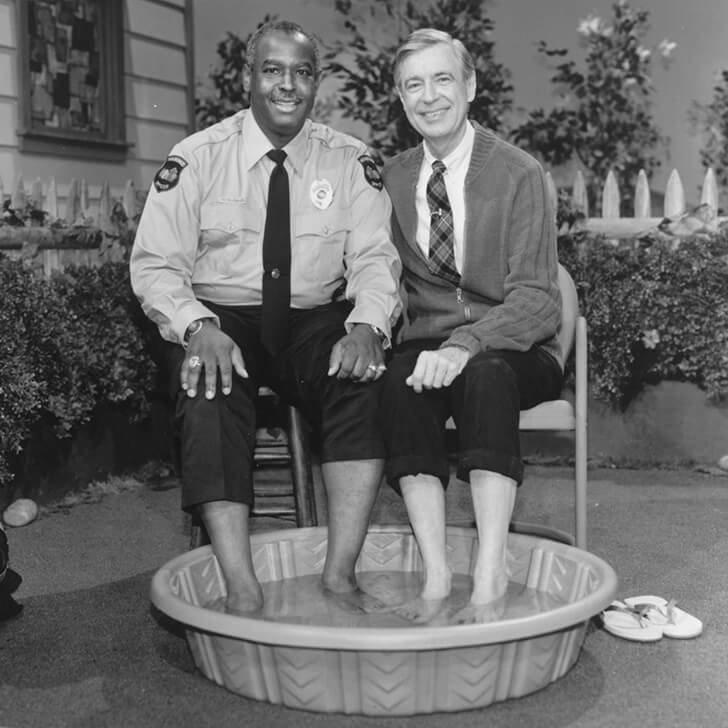
He asked Officer Clemmons, an African American police officer, to share a small wading pool, breaking racial barriers and advocating for inclusivity and equality. This photo proudly speaks of that moment.
Next: Skip it if you’re faint-hearted!
Lepa Svetozara Fought Against The Nazis Till Her Last Breath
Born on December 19, 1925, in Gašnica, Bosnia and Herzegovina, Lepa Svetozara Radić came from a Bosnian Serb family. At just 15, she joined the Communist Party of Yugoslavia. She was captured during the resistance against the 7th SS Volunteer Mountain Division Prinz Eugen.

The Germans offered her life in exchange for information on Communist Party leaders, but she fearlessly refused, vowing her comrades would avenge her death. At 17 years, she met her fate in a courageous public execution. This snapshot speaks volumes about that fatal moment.
Next: Why do they respect these wild animals so much?
Different Indigenous Groups Revere Wolves for Various Reasons
This particular snapshot debunks every myth manufactured by various settlers about these wild creatures. The carnivorous mammal embodies courage, strength, loyalty, and hunting prowess across different indigenous groups. The Pueblo people consider them guardians of the East, represented by the color white. The Zunis create stone wolf fetishes for protection, believing in their healing and hunting abilities.

Many indigenous groups, including the Munsee Delaware, Mohegans, and Skidi Pawnee, view the wild animal as their special symbol. The Lenape and Shawnee tribes incorporate the Wolf Dance into their tribal dance traditions.
Next: You ain’t know this Upper Manhattan neighborhood enough.
A Casual Stance That Reflects the Pride of Ownership
This photo transports us to the bustling streets of Harlem in 1937, where a grocer takes center stage, embodying the values of entrepreneurship and community. This snapshot captures the vibrant energy and diverse cultural essence that defined Harlem during this pivotal era.

The unbeatable determination of small business owners like the grocer shaped the neighborhood’s identity then and continues to do so today. In this single frame, we catch a fleeting glimpse into the lives of a neighborhood that has gone through several boom-and-bust cycles through the decades.
Next: “Down the way, where the nights are gay “
Three Mighty Boys
The essence of childhood and innocence is truly remarkable. Longing to mature quickly and emulate our parents, we overlook the gravity of wishing away these years. These three young Jamaican boys exemplify the splendor of childhood. Their exuberance is truly infectious, radiating pure joy
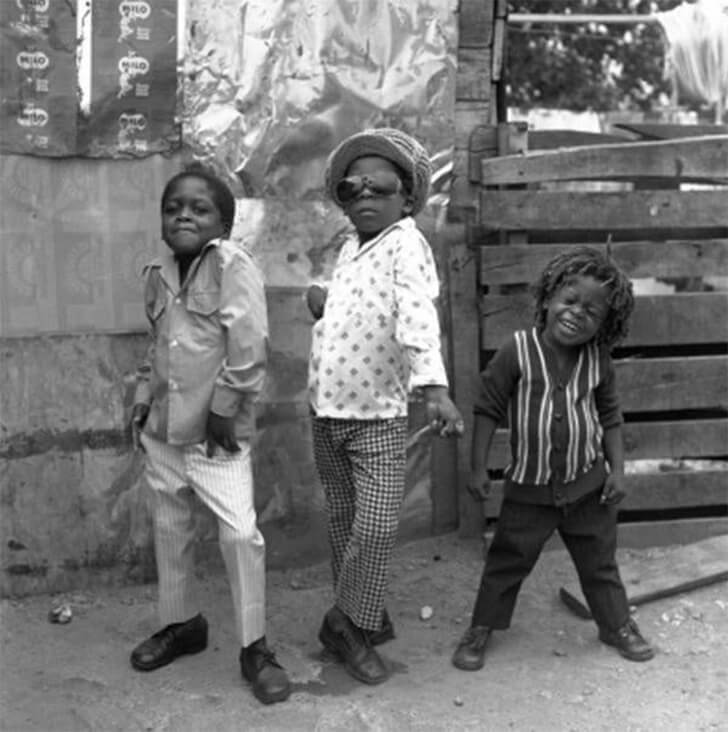
This photo was clicked by Rose Murray, who lived and worked as a semi-professional portrait photographer from 1965 and 1975 in Jamaica. Rose, who learned the art of producing portrait images from Amador Packer, clicked this snap at Majesty Gardens, Kingston, in 1974.
Next: Can you find happiness in their freedom?
Escape from Auschwitz
These Jewish prisoners narrowly escaped death when their train to the infamous Auschwitz concentration camp derailed, thus granting them a second shot at life. Their faces reveal the weight of their painful past and theirstrong will to survive at all costs.
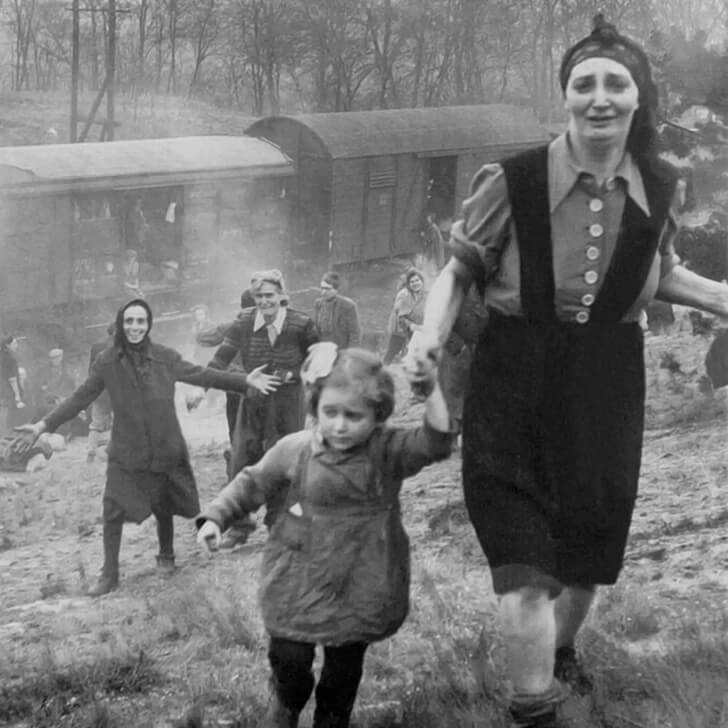
This photo reminds human civilization of the horrors of the Holocaust. The Holocaust was the genocide of Jews in World War II. Nazi Germany and its allies murdered around six million Jews, about two-thirds of Europe’s Jewish population, from 1941 to 1945 across German-occupied Europe.
Next: He must be that one lucky guy.
The Craze for Pedal Cars
Travel back in time to the 1930s and take a look at this photo that speaks volumes about this boy’s socioeconomic class. This young man confidently poses alongside this gem modeled after the Auburn Boattail Speedster, exuding a flair that’s impossible to ignore.
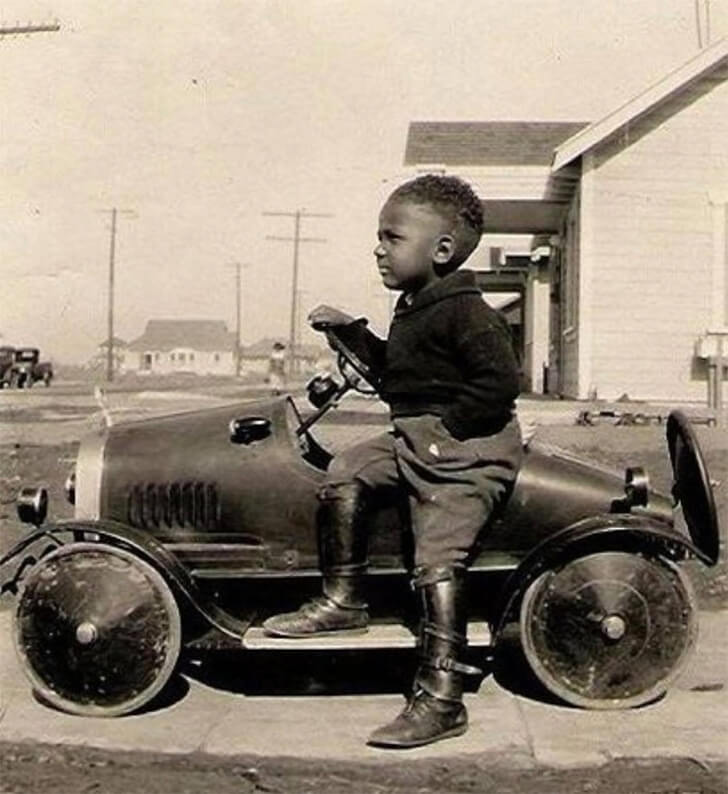
Pedal cars were quite pricey in the 1920s and 1930s, as large manufacturers only marketed the toy vehicles to the wealthy. The boy looks dapper in his boots, and he is probably that one lucky guy in the whole neighborhood with such a prized possession.
Next: Meet the couple who were way ahead of their time.
The Japanese Couple Shows the World How to Take A Selfie
Can you imagine this mirror selfie was captured in Japan around 1920, over a century ago? Old Japanese Photos, a platform dedicated to showcasing vintage Japanese photographs, shared this image. The platform features restored media files in various formats, including negative or positive, 35mm, medium/large format, and glass dry plates.
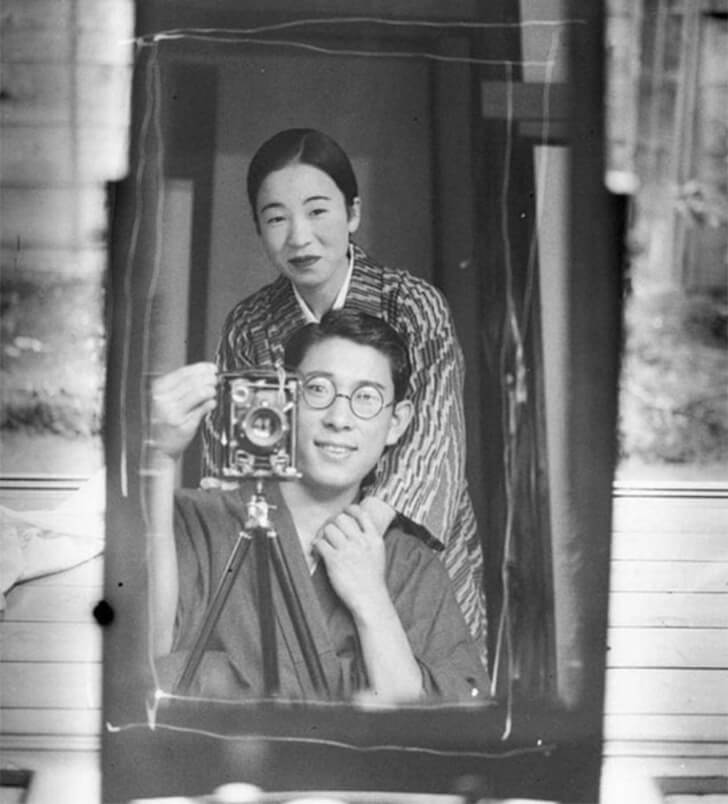
This particular picture was digitized using an Epson v800 scanner from a negative glass dry plate. The genuine expressions on their faces in this candid shot make me instantly smile—they appear incredibly joyful and deeply in love!
Next: This American celebrity left for France and made a career there. Guess who?
Mia Frye Poses for the Camera with Her Mother, Radiah Frye
Mia Frye earned a name for herself as a choreographer and actress. She has been a part of several French reality shows, including “La Ferme Célébrités.”

In this photograph, a little Mia is seen taking a walk on the streets of New York, hand-in-hand with her mother and popular cover girl of yesteryears, Radiah Frye, in 1970. She was just five years old then. Right from that hairstyle to their facial features, everything is so identical! They left for France when she was 12.
Next: Let’s give her a big hand for her incredible feat!
The Athlete Who Forced the World to Sit Up and Take Notice
This 1966 photograph is the perfect epitome of resilience and the hunger to make it big. Bobby Gibb, an influential figure in athletics, did the impossible by taking part in the Boston Marathon, being the first woman to achieve that feat.
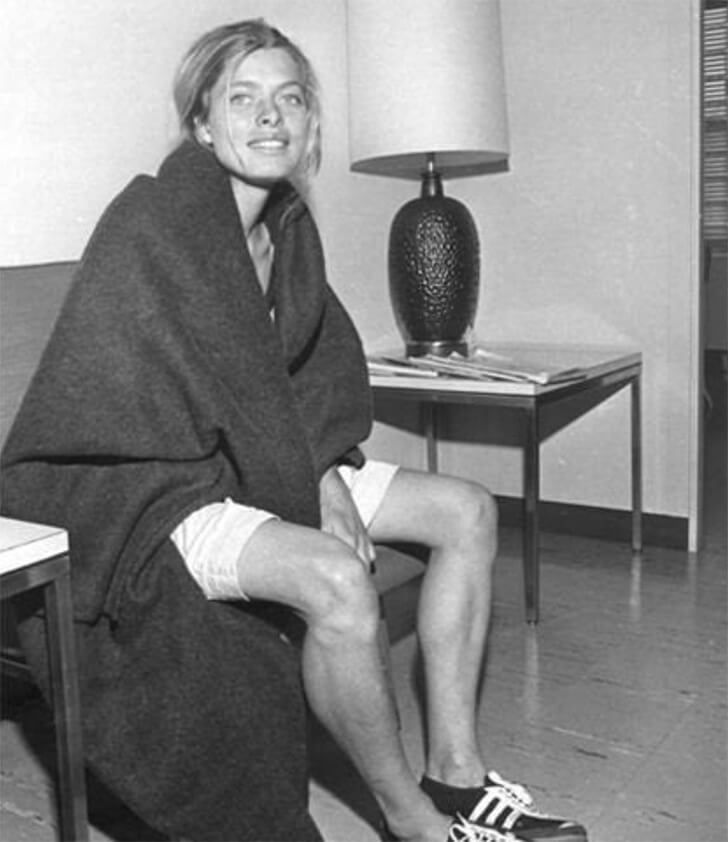
Rules were hard for female athletes back then. The Amateur Athletics Union barred them from running beyond 1.5 miles. However, Bobby’s determination pushed her to break all barriers, and she completed the race in three hours, 21 minutes, and 40 seconds, leaving two-thirds of her male competitors behind.
Next: Can you recognize the sole survivor of the “Aliens” attack?
The High School Portrait of Sigourney Weaver
Sigourney Weaver, a.k.a. Ellen Ripley’s high school portrait, has resurfaced, revealing her poignant choice quote. A young Sigourney strikes a pose in the black-and-white Yearbook portrait shared by @Shunrize on Twitter. Her chosen words, “Please, God, please, don’t let me be normal!” were borrowed from the 1960 musical “The Fantasticks.”
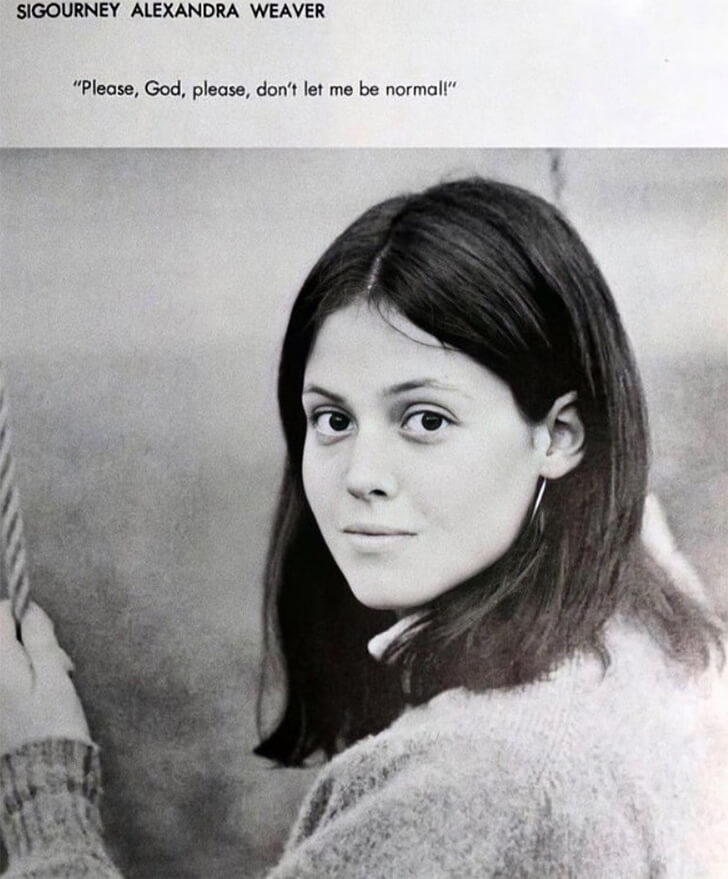
With three Academy Award nominations and the title “Queen of Sci-Fi” attributed to her, she has undoubtedly thrived in living an extraordinary life. Witnessing these glimpses into the past of such a renowned actress is truly captivating.
Next: Is she really Shirley Slade?
Casey Drabble Is Often Mistaken as the Legendary WASP Pilot Shirley Slade
For years, a photo circulated online claiming to feature a Second World War WASP pilot Shirley Slade. However, that’s not the case. Shirley Slade was indeed a pilot in the United States WASP program, trained to fly Bell P-39 Airacobras and Martin B-26 Marauders. She passed away on April 26, 2000.
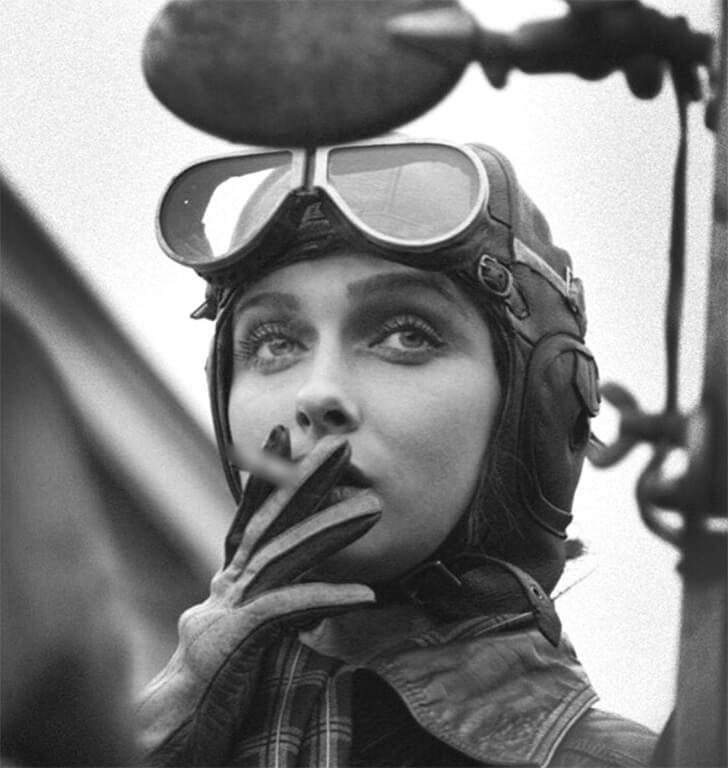
The woman featured on the LIFE magazine cover in July 1943 was her. However, the woman we see here is Casey Drabble, who posed as an aviatrix for a photographer at an event in 2016.
Next: Ultra-fast heating wouldn’t be possible without this invention.
Charles Baker Posing in Front of His Friction Heater
Charles S.L. Baker, a resourceful American, holds credit for inventing the friction heater. A photo captures him beside a heating system, possibly with his brother Peter. His early involvement with wagons and linchpins ignited a profound interest in mechanical sciences.
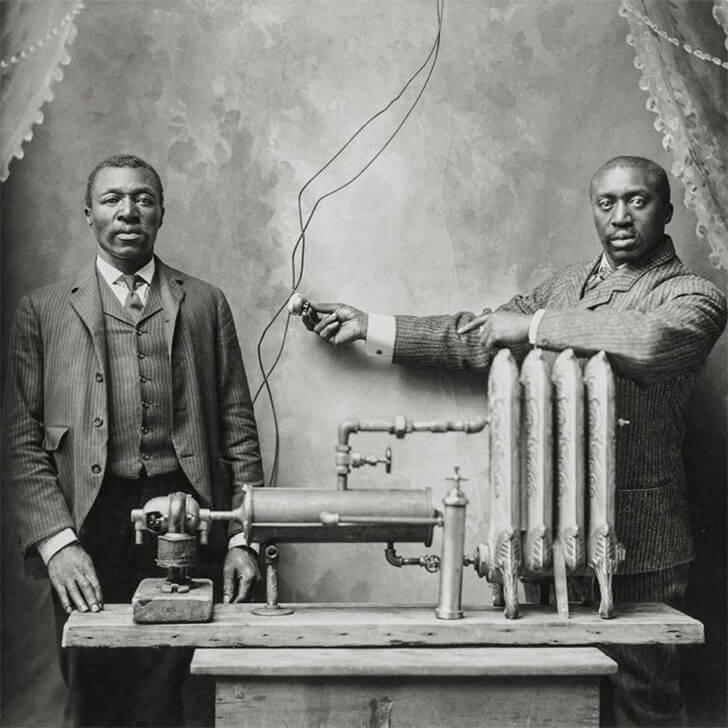
He persistently honed his invention for decades, exploring diverse friction methods, from brick-to-brick rubbing to various metals’ utilization. After 23 years of relentless effort, Charles triumphed, devising a system with two metal cylinders enclosing a spinning wooden core at its core.
Next: “The heart’s voice commands: believe.” – Abraham Sutzkever
An Unparalleled Display of Strength
In Kiel, Germany, during the eighth night of Chanukah in 1931, Rabbi Akiva Boruch Posner hurried to ignite the Menorah before Shabbat. Opposite their home, the Nazi headquarters displayed their Swastika. Rachel, his wife, captured the Menorah’s lights with the Nazi flag in the background.
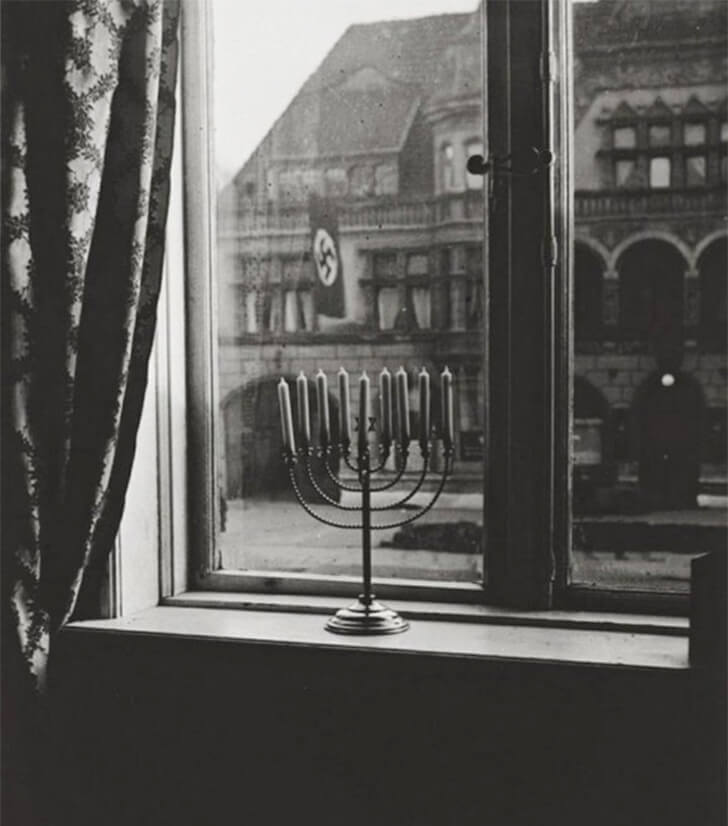
She wrote in German on the photo’s back: “Chanukah 5692. “Death to Judah” was a hideous phrase used by the far-right. So, the light answers, “Judah will live forever.” Their small town had 500 Jews, facing the chilling reality of the German Reich’s influence during those times.
Next: Love among the ruins? Is that possible?
When the Bride Left Her Bombed Home
The story of Miss Ena Squire-Brown, of Dance Dove fame, and her marriage to Royal Air Force flying officer J.C. Martin amidst the challenges of war reflects the indomitable human spirit during times of crisis.
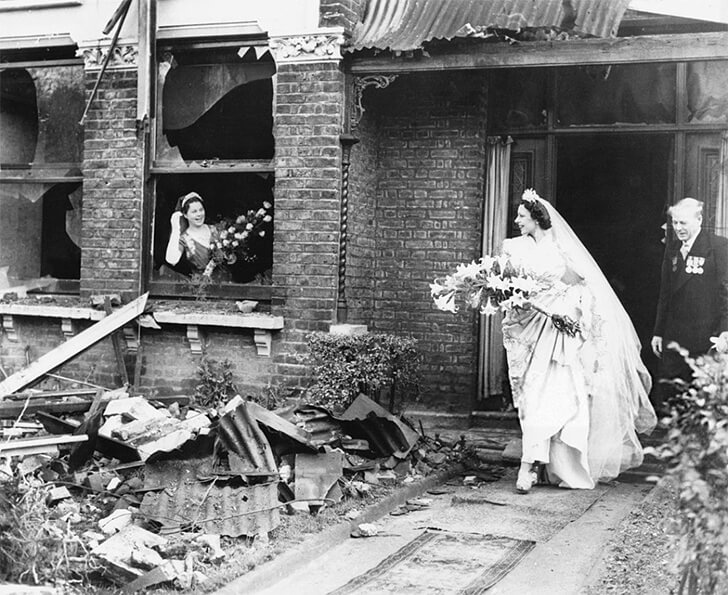
The picture of a well-wisher waving her goodbye as Ena leaves her bombed home in 1940 for her wedding. Unfortunately, Martin lost his life in action in 1941. The story reminds humanity of the sacrifices made during wartime.
Next: How to keep calm and support England during bombing!
Staying Calm Amidst German Aerial Attacks
In September 1940, German air fleets began a concentrated direct bombing campaign targeting industrial and civilian areas of the UK. This marked the start of the Blitz—a period of bombing of London and other British cities until May 1942.
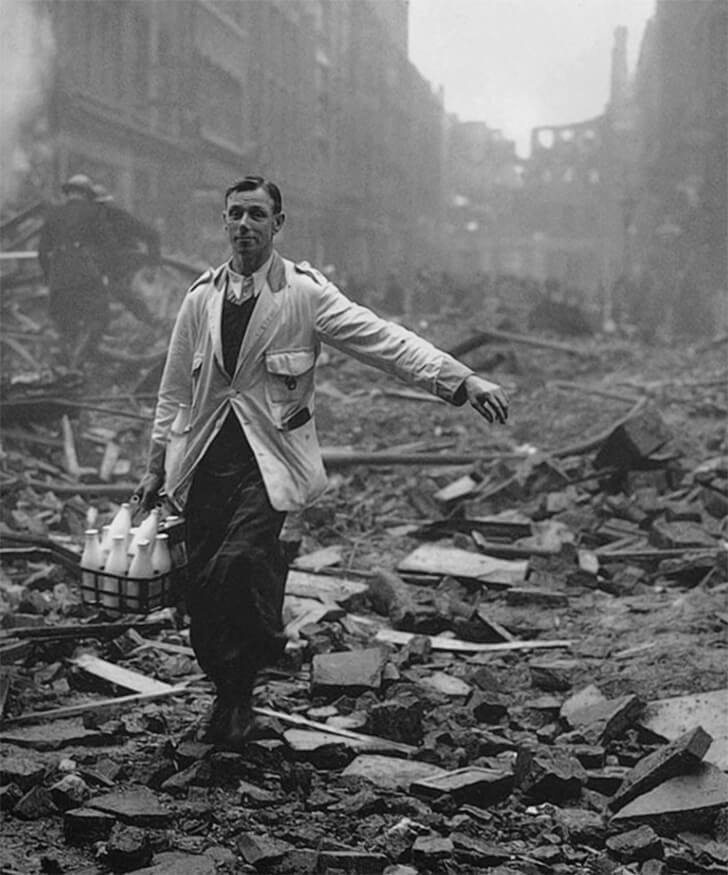
The photo, captured on October 9, 1940, depicted a London milkman carefully navigating the rubble. However, it was staged. Photographer Fred Morley arranged a backdrop of firefighters tackling a fire. His assistant posed as the milkman amidst the ruins, promoting the notion of stoic Britons carrying on with their daily routines.
Next: This became a monument to the Hippie people.
An Iconic Photo That Later Inspired a Sculpture
Tony Riera, a renowned author of remarkable images, captured this photo of a hippie with his child in 1968 at Vondelpark, Amsterdam. The people in this snap are actor Sandy van der Linden, recognized for “Love Comes Quietly” and “Vader en zoon,” and his daughter Radha.
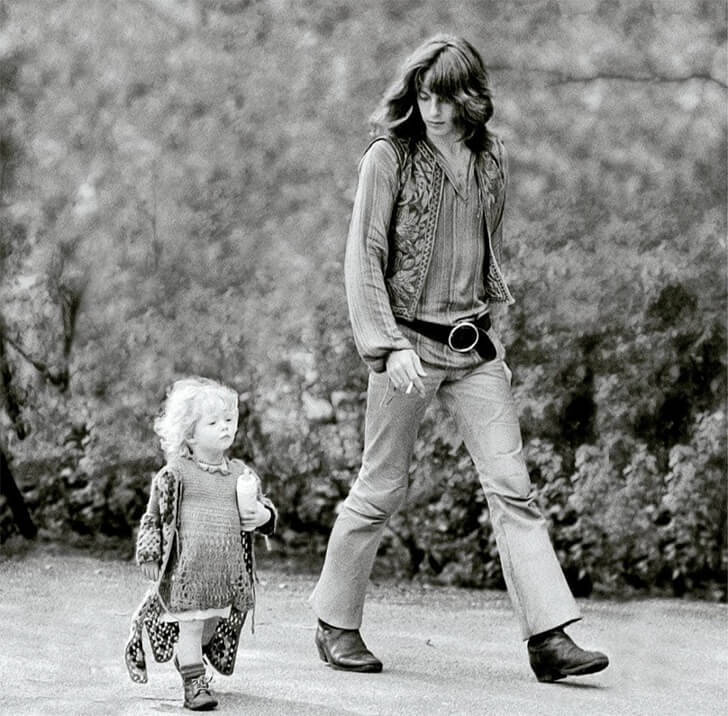
The photo inspired Catalan sculptor Ció Abellí to build a statue of them in Ibiza, a Spanish island and a destination for Hippies to this day. The sculpture is a beautiful three-dimensional representation of the touching moment between the father and daughter and the popular Hippie culture.
Next: Is She a Spanish or Filipino?
A Portrait of a Beautiful Filipina Woman
This is the snapshot of a woman from Luzon, an island in the northern Philippines. The photo was clicked by Francisco van Camp in 1875. Her facial features display a strong European influence. Spain colonized the Philippines for more than three centuries, and her features mix Spanish and Filipino.
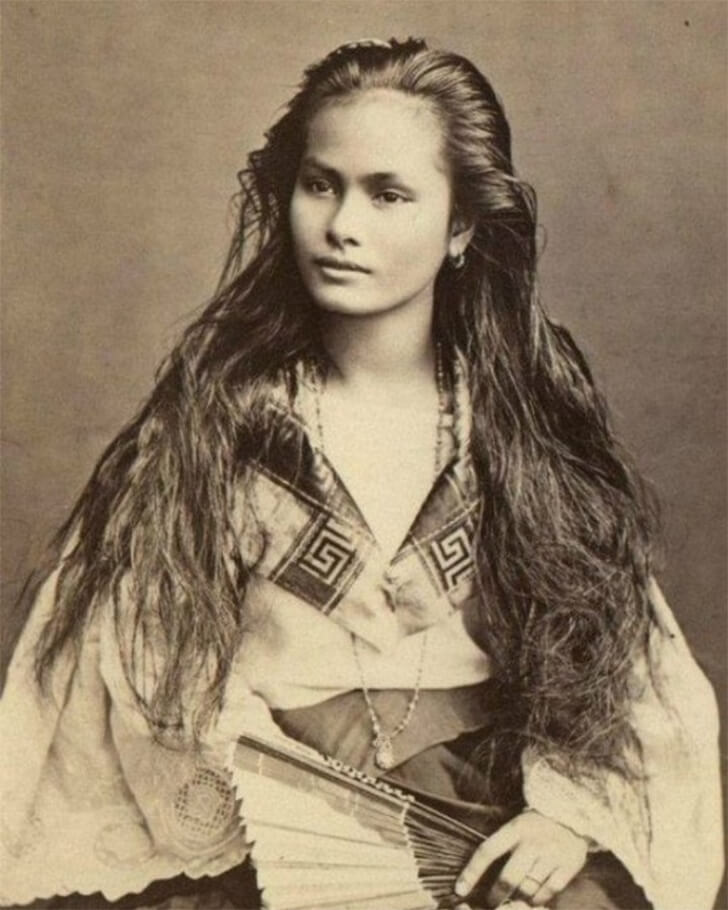
Her hair is coated with coconut oil, and the half-open Abaniko, a type of hand-held fan and a key element of Filipino culture, in her hand suggests she is single.
Next: He was the central character of a ground-breaking documentary.
Nanook a.k.a. Allakariallak
In this circa 1920’s picture, we see Allakariallak, an Inuk man, patiently teaching a boy how to shoot. He gained fame as the star of the 1922 documentary film, “Nanook of the North.” During that time, rumors circulated that certain elements in the documentary were staged, including an actress’s portrayal of his wife.
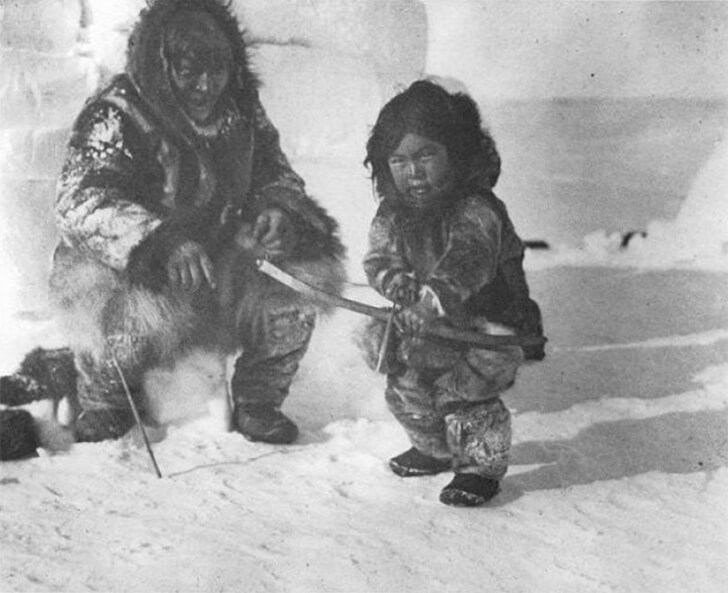
Tragically, Allakariallak is believed to have died of starvation in 1924. The photograph and his story shed light on the challenges faced by indigenous communities during that era.
Next: This photo is weird on so many levels!
KISS Members and Their Parents In A Group Photo
Rock aficionados are no strangers to KISS, the legendary band that has ruled the music scene across the world since they started performing during the 1970s. Aside from their music, the band has caught everyone’s imagination with their unique makeup.
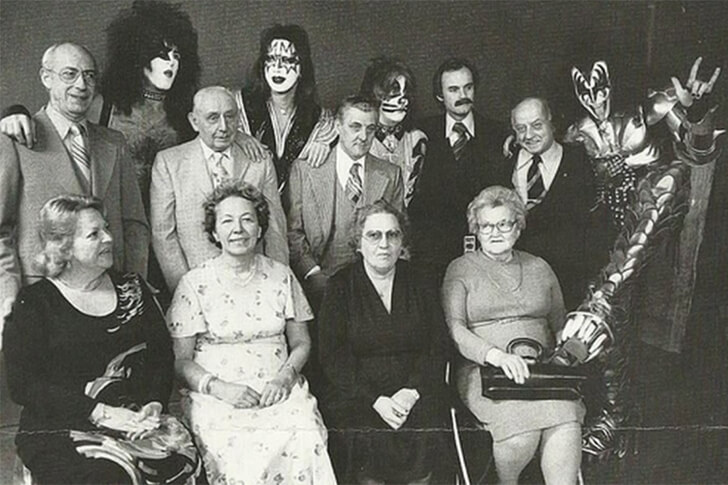
Hailed as one of the most influential groups of all time, KISS members decided to get clicked with their parents. This get-together snap from 1976 testifies that parents’ support is always important no matter how rich or famous people are. We must admit that this multi-family portrait is surreal!
Next: “Life’s too short for chess” – Our Boys, Henry James Byron
Playing Chess Behind the Scenes
In this 1958 photo by LIFE magazine’s Gordon Parks, we get a unique glimpse into a New York City nightclub. It’s an unexpected sight. Three showgirls are taking a break between stage sets engrossed in a game of chess at New York’s Latin Quarter.
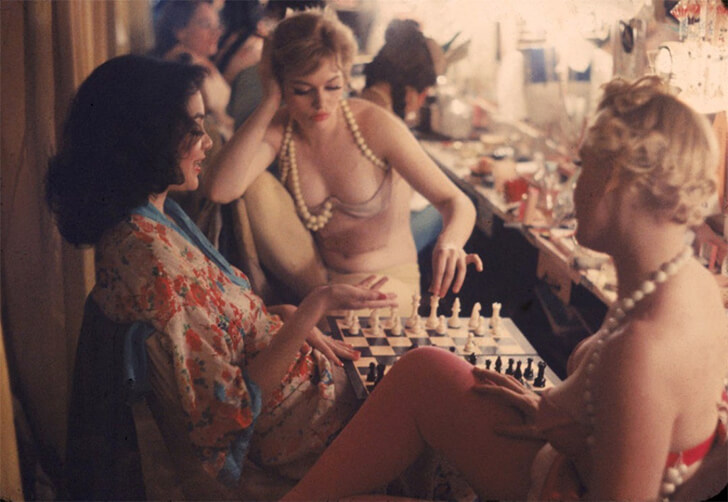
Pat Farrell is about to make her move, while her opponent, Grace Sundstrom, sits on the right. Shirley Forrest, an ex-school teacher, observes from the left. The picture offers a charming behind-the-scenes moment, showcasing a different side of the showgirls’ lives beyond the spotlight.
Next: Check out these BIG Easter Eggs for Adolph Hitler!
A Special “Gift” for Hitler
In this photo, we see Sergeant William E. Thomas and Private Joseph Jackson from the 333rd Field Artillery Battalion, who were then part of the 969th Artillery Battalion. During World War II, soldiers like them would hilariously express their disdain for the enemies by scrawling messages on shells.
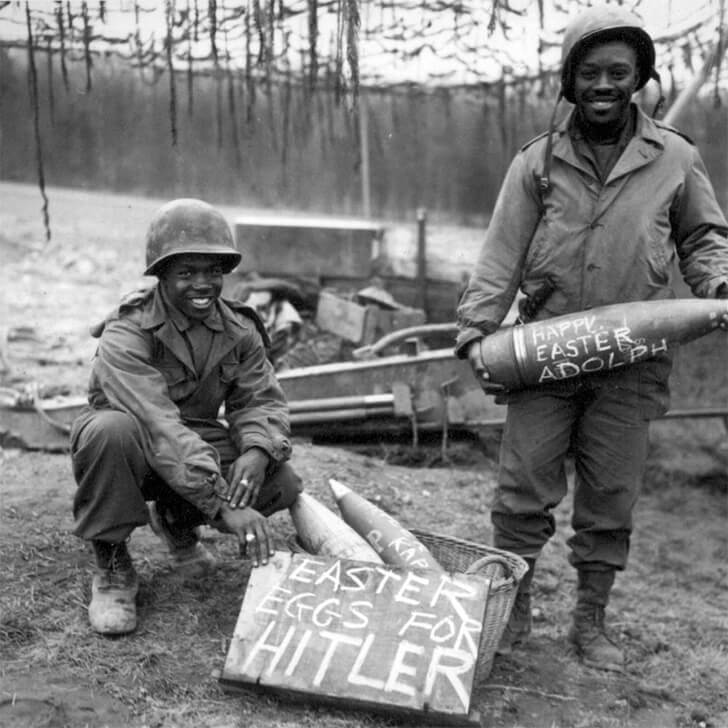
This lighthearted practice allowed them to find some levity amidst the seriousness of war and convey their feelings about the adversaries they were facing. Ironically, these two soldiers and many others from the community were discriminated against in their own country at that time.
Next: He finally crossed that line!
The Unsung Hero Who Dared to Stand Up
Against a grim backdrop of racial discrimination, numerous Black individuals valiantly challenged the status quo, demanding fair and equal treatment under the law. One such unsung hero is David Isom, whose remarkable story warrants greater recognition. In 1958, at just 19 years old, he courageously broke the color line at the segregated Spa Pool in Florida.
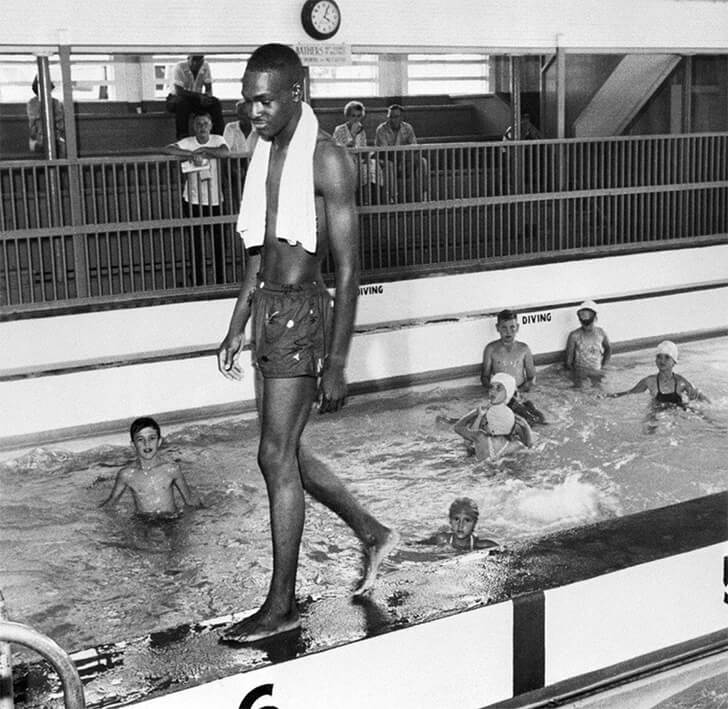
This pool, alongside Spa Beach, was exclusively reserved for white people, leaving Black individuals with an inferior, littered area called “The South Mole.” On June 8, 1958, Isom took a momentous stand, catalyzing a transformative change in history.
Next: Meet the Apple legend.
The Mastermind Behind Apple Smiling Computers
Susan Kare, the graphic designer we see in this candid click, learned counted-thread embroidery from her mother, providing her with the foundation to create the first icons for the Apple Macintosh 35 years ago. Her groundbreaking designs have become iconic, like the smiling computer at startup, the trash can for recycling, and the computer disk for saving files.

These recognizable creations, patented through the U.S. Patent and Trademark Office, have earned Susan the prestigious Lifetime Achievement Award from Cooper Hewitt, showcasing her profound impact on technology and art.
Next: This is what hanging out looked like in 1959.
When Love Knows No Race
This 1959 photograph by Charles “Teenie” Harris in Pennsylvania shows couples enjoying their time at a bar or restaurant. The couples, consisting of three men and three women, are seated in a banquette. The advertisement on the wall displays tempting offers. Harris captured both everyday residents and notable visitors in Pittsburgh.
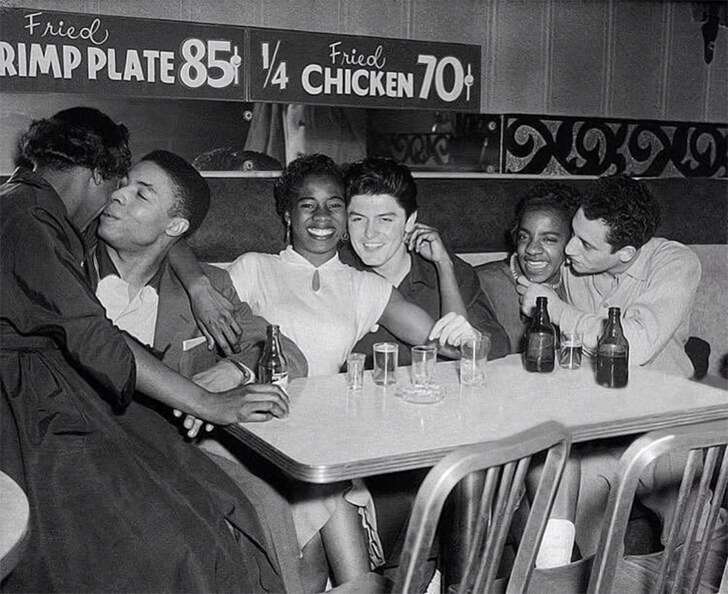
His work is treasured in the Carnegie Museum’s permanent collection, preserving the vibrant life of African American communities in mid-20th century Pittsburgh. Furthermore, Harris was privileged to photograph legendary figures such as Muhammad Ali and Louis Armstrong.
Next: Meet the giants from India!
The Two Giants Dwarfing James Ricalton
The Durbar of 1903 took place in Delhi on New Year’s Day to celebrate King Edward VII’s succession. The Maharaja of Jammu and Kashmir brought two of the world’s tallest men from the region.
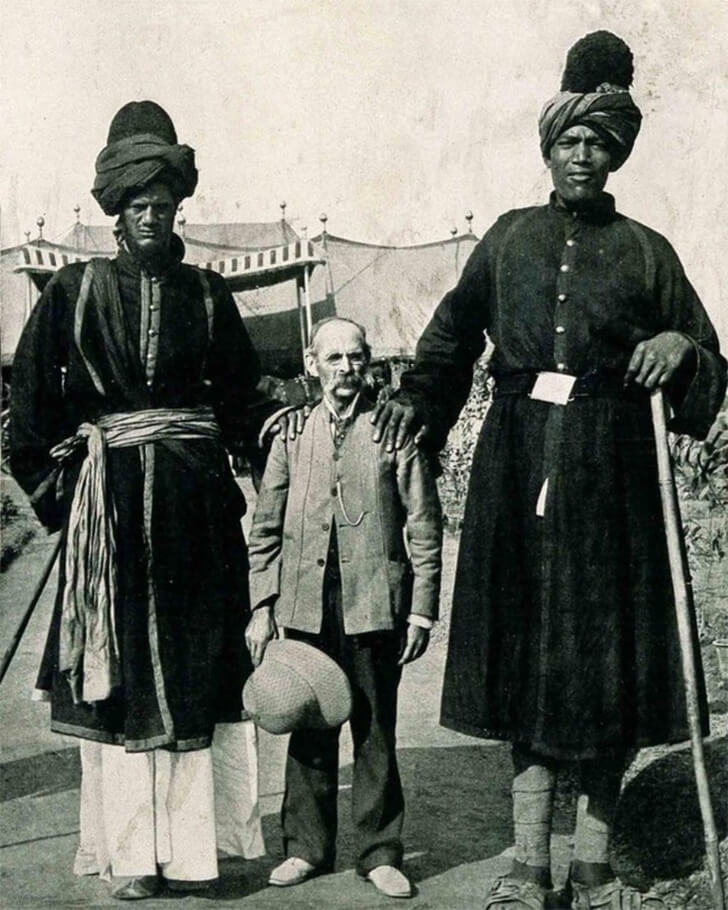
One giant stood at an astonishing 7’9″ tall, while the “shorter” one was still an impressive 7’4″. Believed to be twin brothers, they left a lasting impression at the Durbar, towering above everyone else, including James Ricalton, an American photographer. Fondly known as the Two Kashmir Giants, they served as elite riflemen in the Maharaja’s service.
Next: It was just a brick in the wall.
The Rebellious Spirit of the 1980s
Every child is born naturally curious, fueling their urge to communicate, making them talkative and restless. School becomes a place of dislike due to limited freedom. Students are confined to classrooms, needing permission for nearly everything, and must adhere to strict rules.
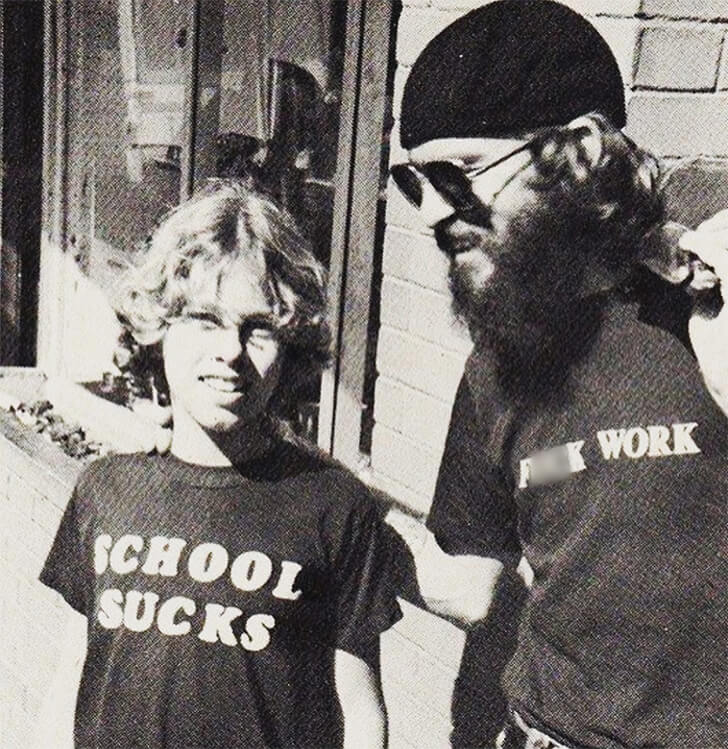
Work often seems like a burden for adults, pulling them away from other desired activities. However, it is essential for financial independence. It revolves around obtaining a job, working diligently, and receiving payment. These two brothers wore these creatively worded t-shirts to vent their frustrations back in 1980.
Next: Remember this roaring lion?
The Immortal Mascot of MGM
Leo has graced Metro-Goldwyn-Mayer Pictures consistently since its inception in 1924. His mighty roar evokes memories of Hollywood’s Golden Age when MGM held a prominent position among the major studios.
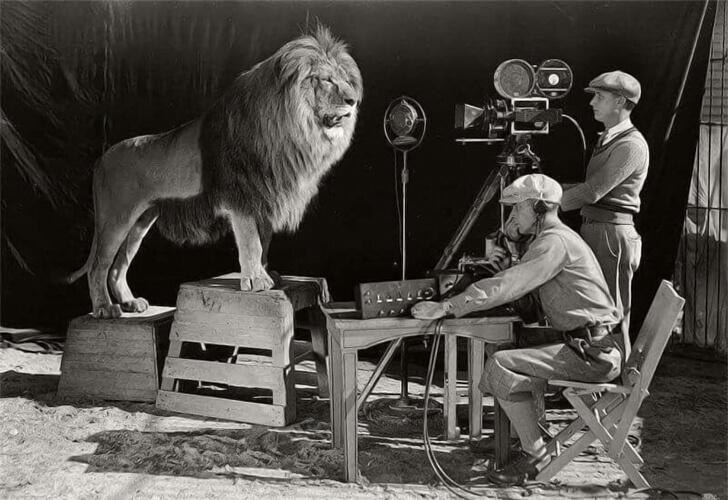
The choice of a lion as their symbol was fitting. Jackie, another roaring cat, made his debut in MGM’s first sound feature, “White Shadows in the South Seas,” in 1928, and his iconic sound was recorded using a gramophone. He was also honored to be the first lion featured in Technicolor, opening “The Wizard of Oz.”
Next: Let’s look back at possibly the most prosperous time in American history.
“The American Dream” in a Single Frame
In the 1950s, the American Dream was in full swing, with WWII soldiers returning home to start families. Reunited couples were thrilled, resulting in a baby boom and larger households. Suburban living became popular during this era. This captivating photograph from 1959 portrays a blissful family gathered around the dinner table in the United States.
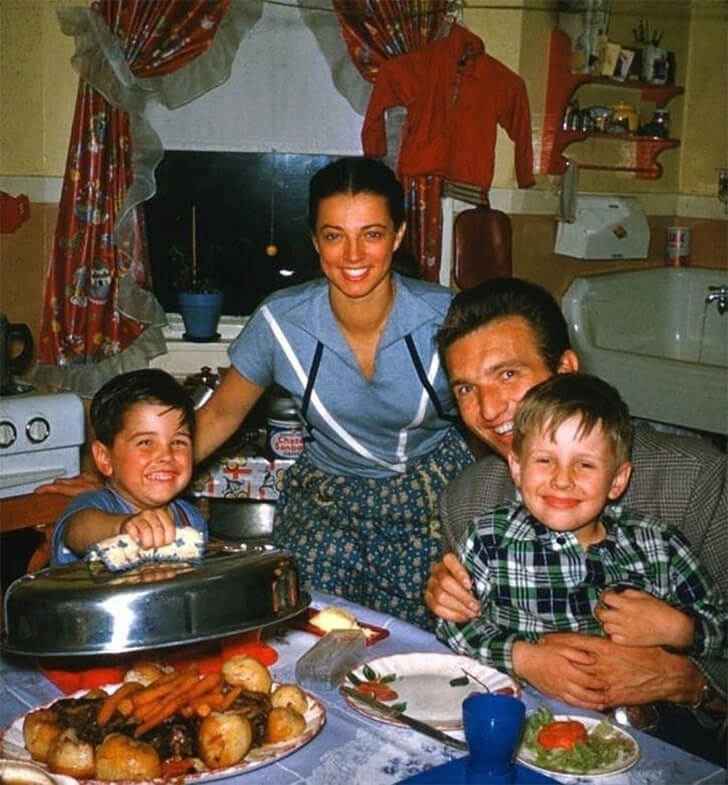
Love, connection, and shared joy radiate from the members’ happy and content expressions. It reflects the cherished moments of togetherness that characterized the American way of life during that time.
Next: She was a beauty with a gun!
An Icon of Spanish Civil War (1936-1939)
Marina Ginestà gained fame for a photograph captured by Juan Guzmán atop Hotel Colón, Barcelona, during the July 1936 military uprising. Although a reporter, it was the sole instance she carried a gun, an M1916 Spanish Mauser from the renowned Oviedo factory for the Spanish Army.
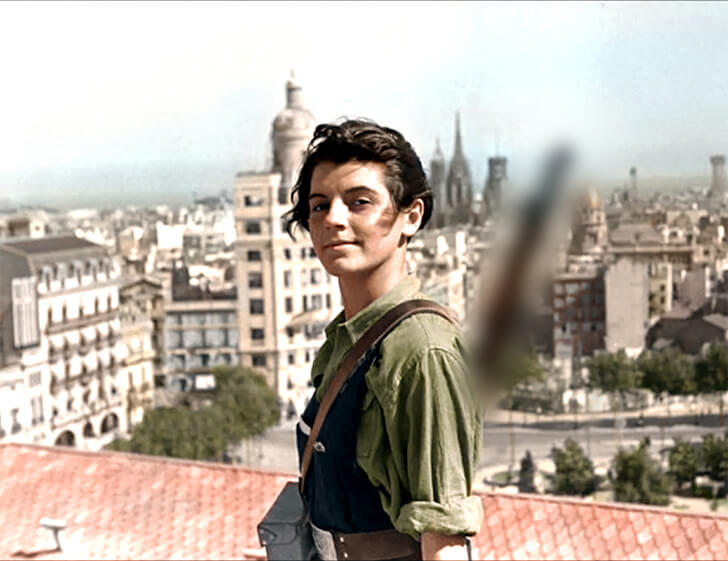
She was part of Unified Socialist Youth, affiliated with the Spanish Communist Party. Throughout the war, Marina served as a reporter and translator, aiding Mikhail Koltsov, a correspondent for the Soviet newspaper Pravda.
Next: Let’s travel back to the idyllic Paris.
A Heartwarming Moment on the Streets of Paris
In this heartwarming 1960 snap taken by photographer Robert Doisneau in France, we see a father lovingly teaching his daughter to ride a bicycle. A French shutterbug, Robert captured the essence of Parisian streets in the 1930s. He popularized humanist photography and photojournalism alongside Henri Cartier-Bresson.
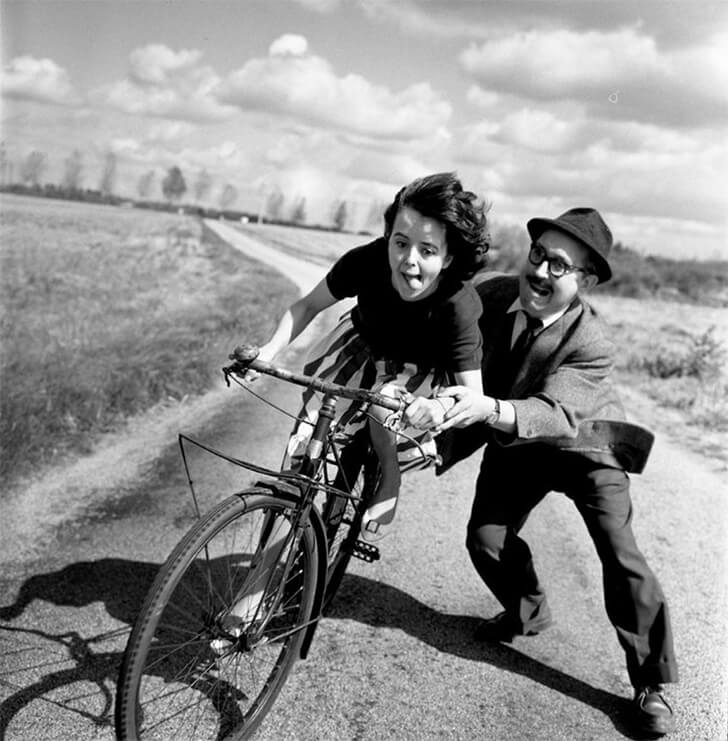
One of his most famous works is the 1950 image, “Le baiser de l’hôtel de ville” (The Kiss by the City Hall). In 1984, he was honored as a Chevalier of the Legion of Honour by then-French president François Mitterrand.
Next: Meet the daredevil Ojibwe man.
Spearfishing Against All Odds
This photograph captures the essence of civil disobedience at that time. Despite the treaties guaranteeing Ojibwe rights to hunt and fish on ceded lands, the state of Wisconsin started to assert its authority to regulate hunting and fishing statewide, gradually limiting these activities after 1854.
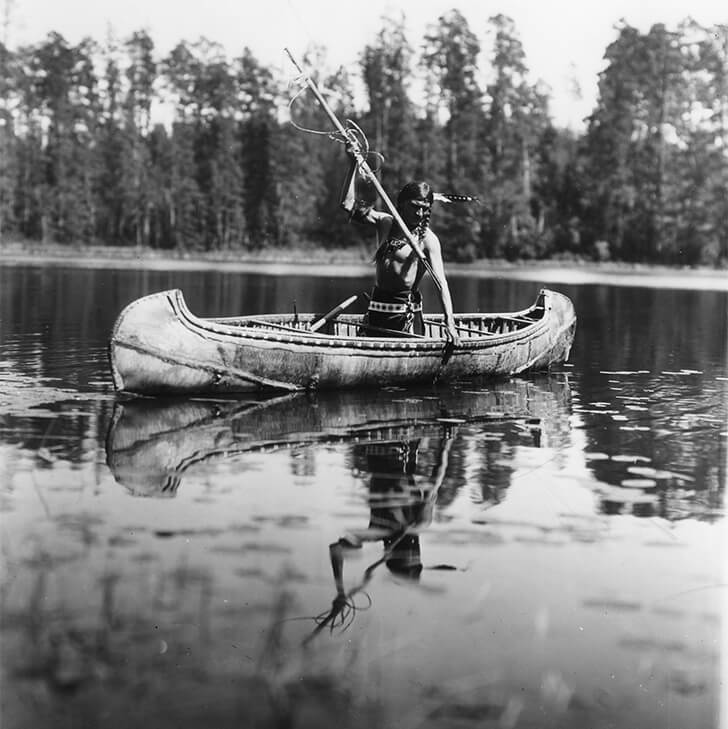
These actions by the state led to tensions and conflicts over time, culminating in violent clashes during the 1980s and early 1990s as Ojibwe spearfishing became a contentious issue in the region. The struggle continued even as the violence subsided in more recent years.
Next: What happened as food supplies dried up in London?
Victims of Food Crises in London During WWII
The photo dates back to the Second World War in 1939, showing a young girl with her Welsh terrier arriving at a corner shop only to learn there are ‘no dog biscuits today.’ Due to ongoing crises, rationing was implemented by the British government at various points in the 20th century.
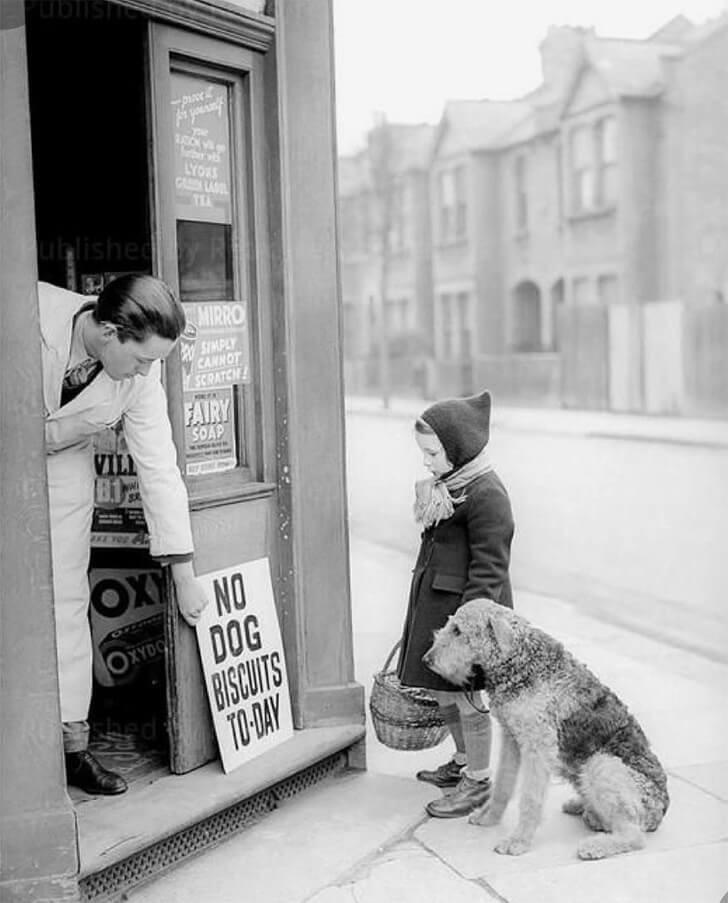
As the war began, the UK heavily relied on food imports, making up a significant portion of essential items. It was during this period that the British pet massacre occurred. Over 750,000 pets were tragically euthanized to prepare for anticipated food shortages during WWII.
Next: Remember those candy cigarettes?
Children Have Their Unique Ways to Irritate Parents
These two unidentified young fellows posed for the camera at some point in the 1970s with beer cans and candy cigarettes. What’s the motive, though? Of course, annoying their mother.

The candy cigarettes, as we know them, were just too convincing. Some of the early brands also modeled these candies after real cigarette brands. The packaging of these mint-flavored candy cigarettes also mimicked the real brands. Parents were naturally worried that these candies would desensitize kids to smoking and that fear was real.
Next: Is that an oasis in Giza?
Great Pyramids of Giza in 1917
The most iconic symbols of Egypt are the Great Pyramids of Giza and The River Nile. Long before the Sphinx was uncovered, the pyramids and the Nile used to have a close encounter. A branch of the Nile River reached the Pyramids area, and during flood time, their reflection could be seen on the water.
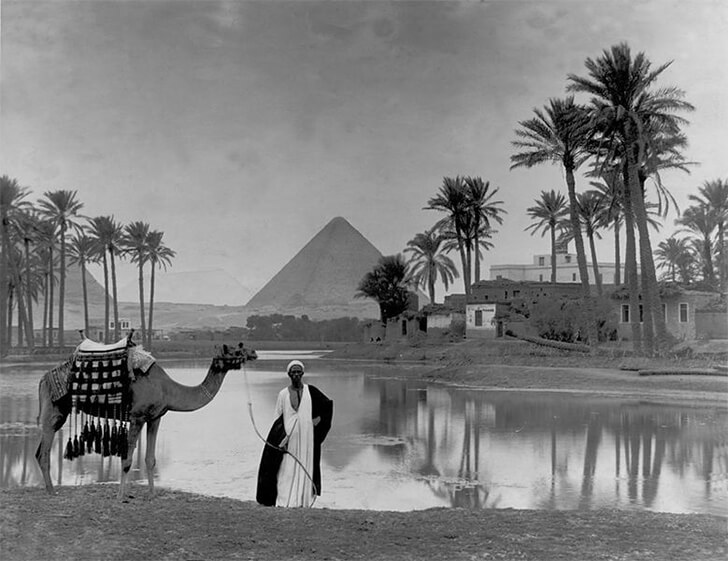
Today, the pyramids stand tall amidst a crowded city with millions of residents, a vastly different environment from when they were built. It’s mesmerizing to witness the great changes in their surroundings while the pyramids remain unchanged.
Next: This native American lived for 137 years.
The Chippewa, Who Was Known as Ga-Be-Nah-Gewn-Wonce
In the woods near Cass Lake, Minnesota, a Chippewa Indian named John Smith lived, claiming to be 137 years old, until his passing in 1922. The Chippewa referred to him as Ga-Be-Nah-Gewn-Wonce, meaning “wrinkled meat,” due to his face’s leathery appearance. His age was a subject of much debate.
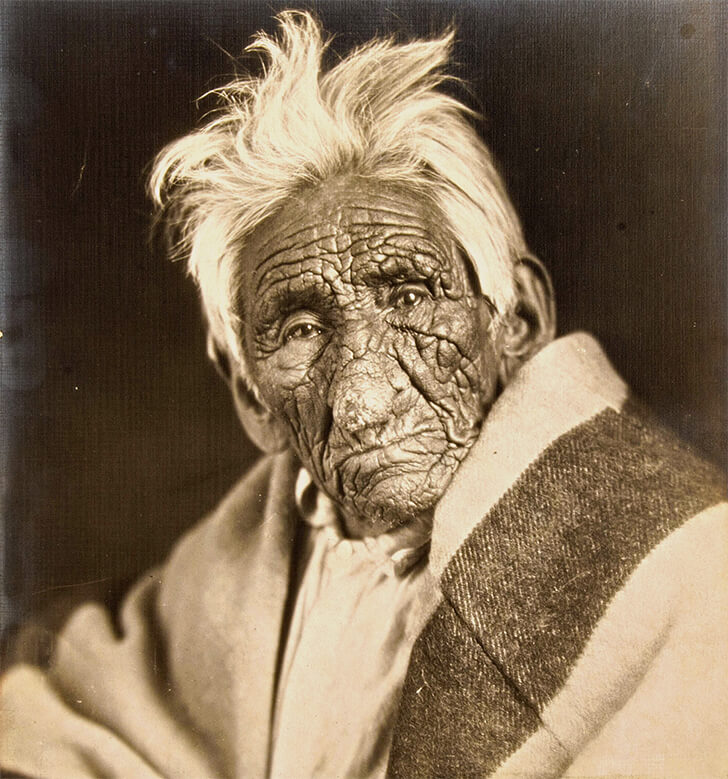
Based on the indigenous peoples’ accounts and Chief John Smith’s statements, he was 137 at the time of his death in 1922, implying a birth year of 1785. His legendary wrinkled face was widely recognized in the area.
Next: Was that too indecent?
An Unusual Protest at the Miami Beach
French designer Louis Réard introduced the bikini in 1946, which caused controversy due to its bold and revealing design. Spain, Portugal, and Italy were among the countries that initially banned it in the 1950s, considering it too provocative for public beaches. Some states in the U.S., too, followed suit.
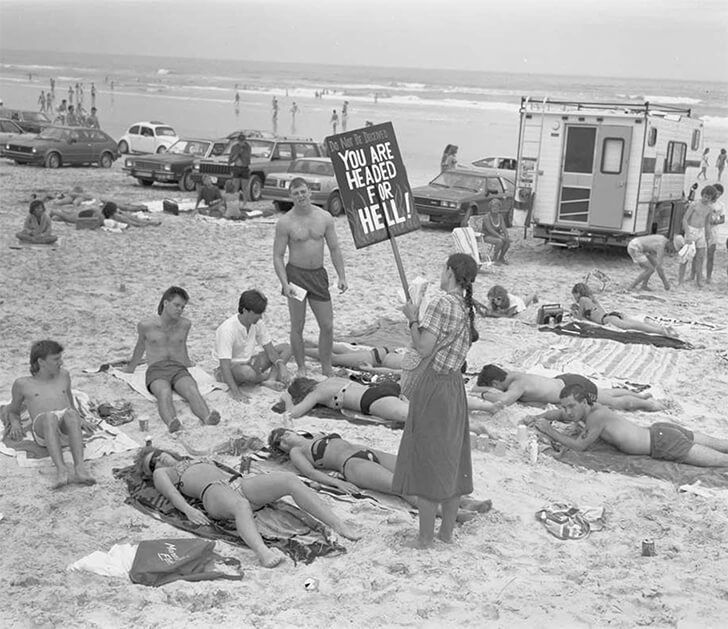
Religious and conservative groups also disapproved of its minimalistic style. The protest against bikinis persisted for quite a while, stretching into the 1980s, as evidenced by this photo taken in Miami Beach. However, bikinis became widely accepted and popular swimwear with time.
Next: Old Paris is almost unrecognizable!
A Brilliant Work by Kurt Otto-Wasow
Ile de la Cite, located on the River Seine in central Paris, became a significant religious center in the 12th century. It housed the renowned Notre Dame cathedral, the royal chapel of Sainte-Chapelle, and the city’s first hospital, the Hôtel-Dieu.
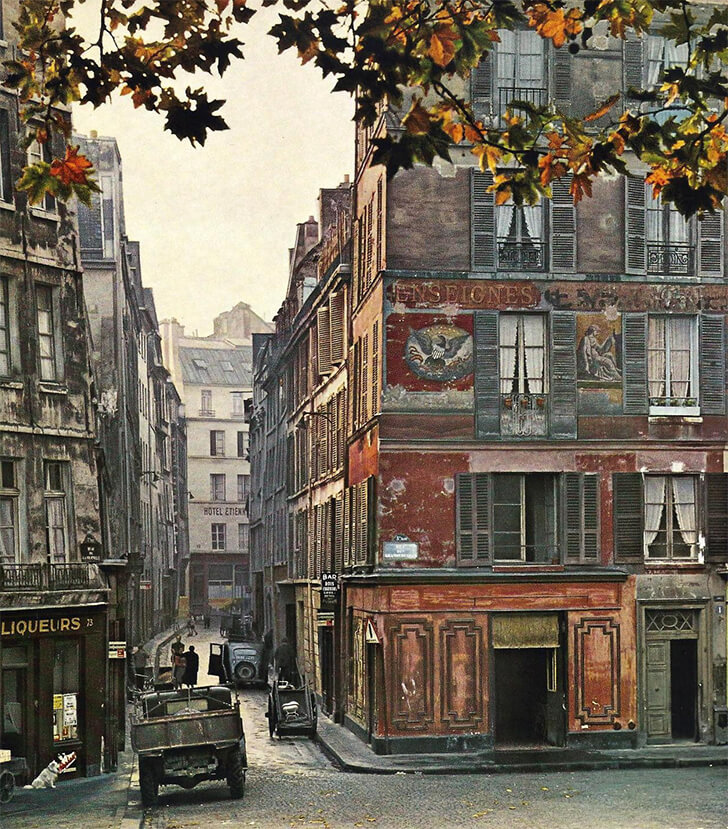
Interestingly, the place photographed is not exactly on the Ile de la Cité but lies adjacent to it, along the Seine in the 5th arrondissement. Specifically, it is close to Rue des Grands. Photographer and illustrator Kurt Otto-Wasow is credited for this discovery.
Next: A look back at the “Bike Boom!”
Unprecedented Popularity of Bikes
In the early 1970s, lightweight ten-speed bikes and improved bikeways sparked a cycling craze in the United States. The surge in popularity was evident as bike sales soared from 7,000,000 in 1970 to over 15,000,000 by 1973, with an additional 14,000,000 sold in 1974.
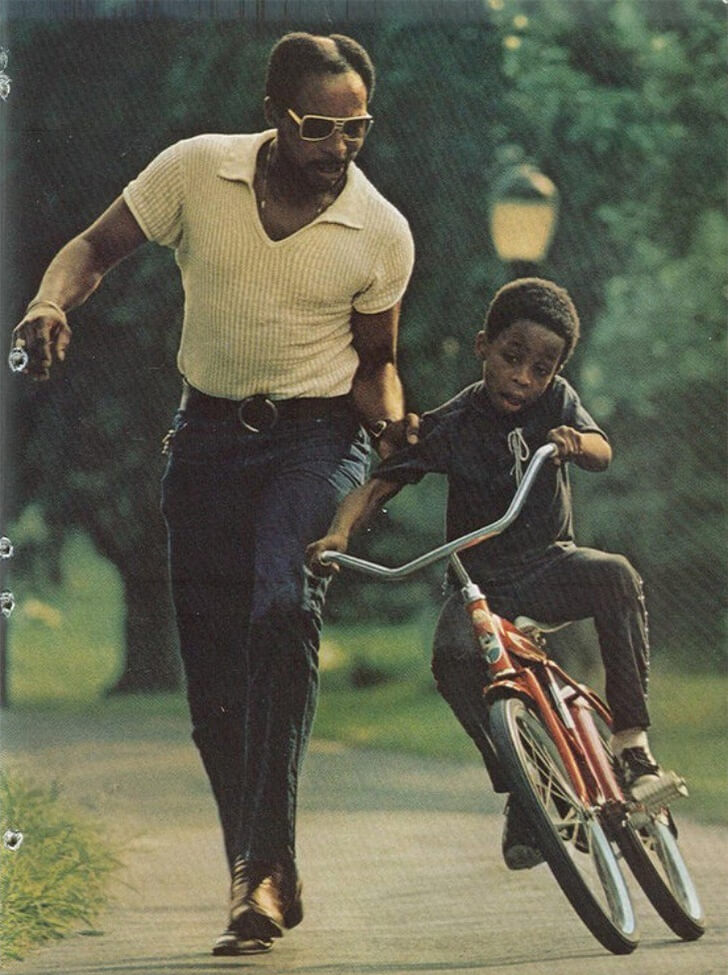
National Geographic’s May 1973 edition, which this photo is a part of, celebrated the resurgence with the headline “Bicycles Are Back and Booming!” These new multi-sprockets bicycles made long-distance cycling and climbing steep grades much more manageable compared to traditional models.
Next: You will cry if you see this.
The Residents of Tenements Had No Other Choice
Living in a tenement apartment taught many about the intense heat confinement in those tight and stuffy spaces. Approximately two-thirds of New York City’s population resided in tenements in 1900. Some resorted to sleeping on rooftops to endure scorching heat waves, while others sought refuge on Coney Island’s beach, piers, or Central Park.
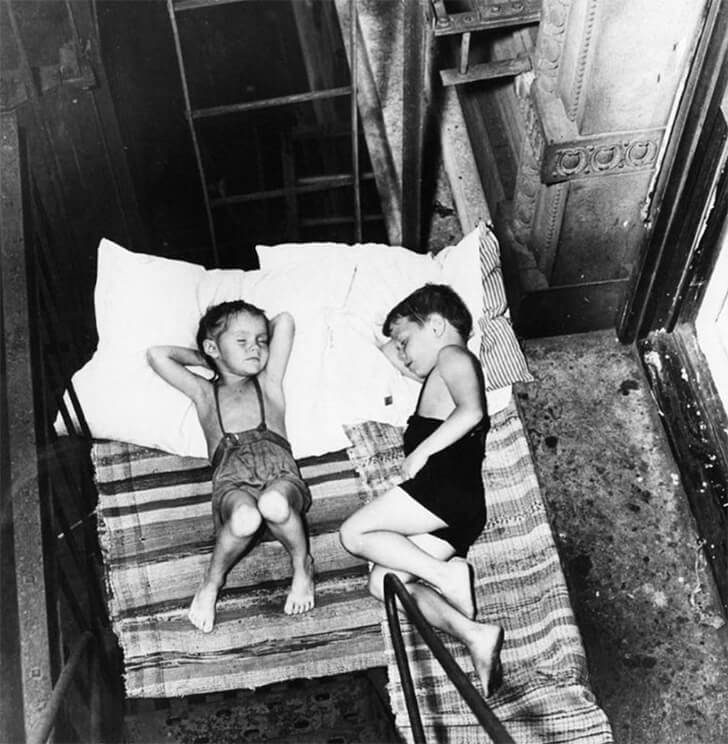
A risky yet common option was to lay a blanket and pillow on the fire escape. Safety wasn’t guaranteed, but the less privileged kids and adults in pre-air-conditioned New York had no choice but to take their chances.
Next: This chief going to war has an enviable feather headdress.
A Sioux Man Ready to Fight for His Rights
The Sioux, a prominent and ancient Native American tribe in North America with three millennia of history, once held vast territories covering thousands of square miles.
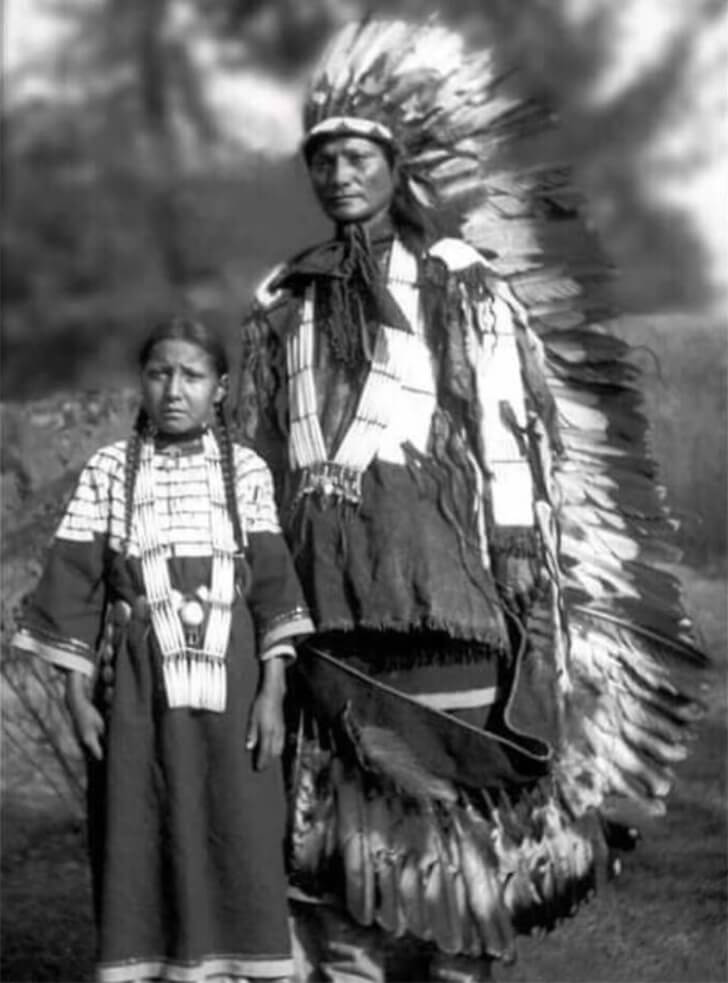
A striking image of a Sioux man in a warrior’s attire reminds us of the Sioux Wars (against the U.S. government), fought from 1854 to 1891. These battles took place mainly in the Great Plains, between the Mississippi River and the Rocky Mountains. Finally, the settlers gained control over the Great Plains, forcing the Sioux into smaller reservations.
Next: You haven’t seen anyone doing this after getting arrested.
Smiling after Getting Arrested for Growing Marijuana
A Reddit user named Meta_Man_X shared this photo taken in California during March-April of 1975. It was his uncle with his hands behind him. At that time, he had horticultural hobbies, tending to grow banned herbs in his backyard. Although he no longer pursues horticulture, he still regularly smokes pot.
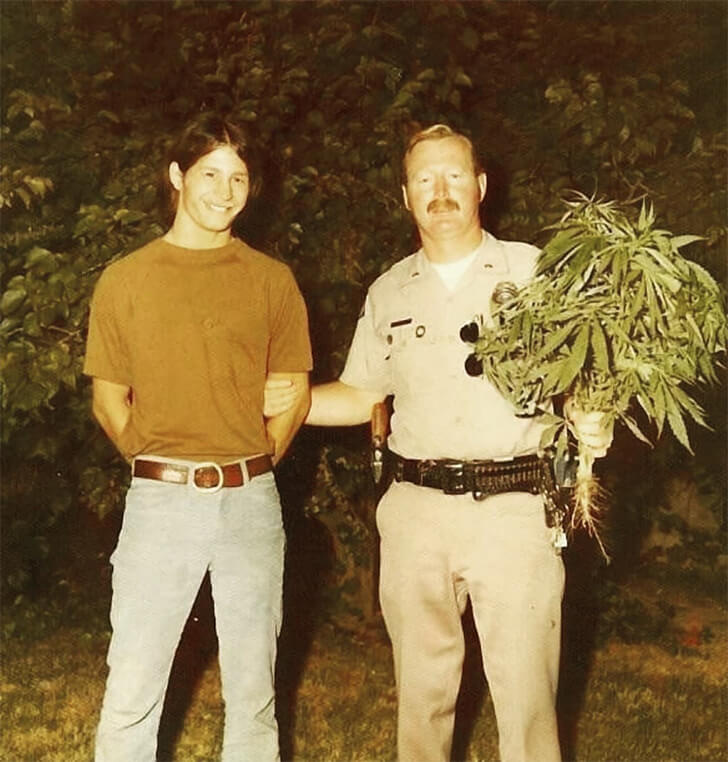
The picture captured a significant moment when the police arrived due to a fistfight between him and his sister’s boyfriend. The boyfriend called the police, suspecting pot cultivation, but as they lacked a warrant for the plants, Meta_Man_X’s uncle was eventually released.
Next: They did not witness the Apollo 8 launch.
A Historically Inaccurate Morphed Photo
Apollo 8, from December 21 to 27, 1968, marked the first crewed spacecraft to journey beyond low Earth orbit and reach the Moon. The crew safely orbited the Moon ten times without landing before returning to Earth.

However, the image featuring the couple is not authentic. It’s a composite of two different photos. The couple’s original picture was captured around 2016 at the Tretyakov Gallery in Moscow, Russia, where they were admiring Viktor Vasnetsov’s painting, “Ivan Tsarevich Riding the Grey Wolf,” not witnessing the Apollo 8 rocket launch.
Next: This eerie photo was captured during the 9/11 attacks.
The Memories of That Fateful Day
September 11, 2001, remains somber, evoking sadness and fear, particularly for New York City residents who experienced the deadliest terror attack in U.S. history. Two hijacked planes struck the Twin Towers, claiming nearly 3,000 lives.

The young boy in the photo is Austin Sansone, all grown up now, who posed at the same place again on May 29, 2015, to confirm its authenticity. He shared that his mother took the picture, and he believes the snap was clicked after the first tower was hit.
Next: You will love this photo if you are a fan of the counterculture.
A Hippie Commune Girl
This is Roberta Price. In the summer of 1969, Roberta, a recent college graduate, received a grant to photograph various communities. When she and her partner David arrived at Libre in Colorado’s Huerfano Valley, they were so captivated by what they found that they chose to be active participants rather than mere observers.

Huerfano was a hub of countercultural experiments, and Roberta shared her enthralling seven-year memoir in “Huerfano.” Alongside fellow baby boomers, they learned various skills, from mixing cement, weaving rugs, making art, music, and experiencing love.
Next: “‘Cause this is our dance. Darling, remember, it’s our dance!”
When A Teenager Saw Legend Elvis Presley in Action
Back in April 1957, an unidentified teenager attended Elvis Presley’s performance at the Philadelphia Arena in Pennsylvania and was overwhelmed by his charisma. Many others before and after her fell head over heels for his legendary showmanship.
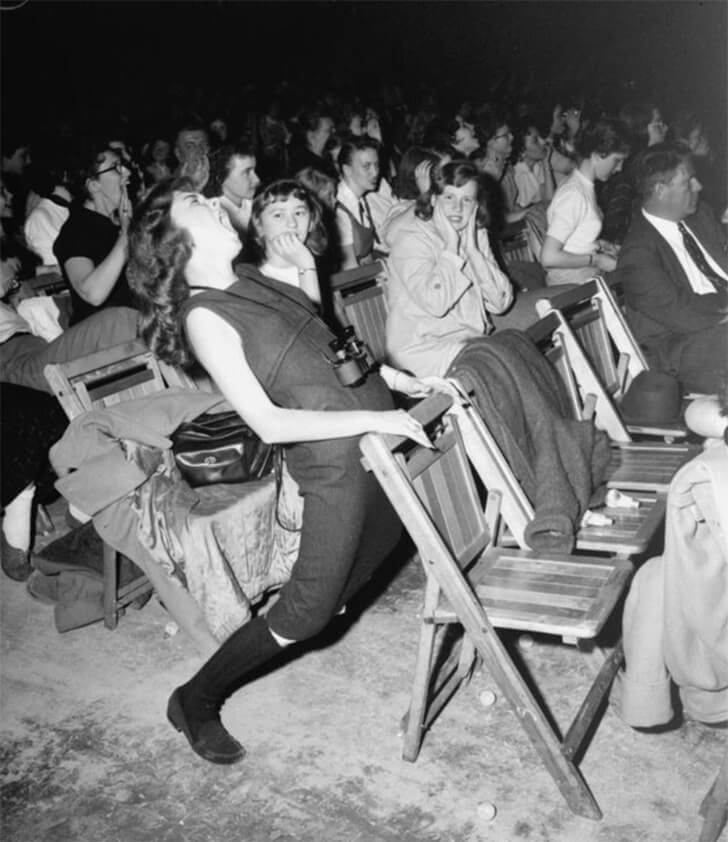
Rock’ n’ roll, particularly Elvis Presley’s music, held a significant role in youth culture for a long time. His impact went beyond just the music genre, as he played a pivotal role in advancing rock and roll and contributed to social changes in the United States during that era.
Next: 101 honest reasons why married men look at other women.
She Won’t Let Her Husband Feast His Eyes
This woman in the background is not happy with her husband ogling other women. In post-1968 French society, topless sunbathing became a matter of controversy. Educated middle classes argued that it was a women’s right, while family groups feared it would scare children (ahem, grown-ups, too!). For years, France proudly held the title of the world capital of seaside semi-nudity.
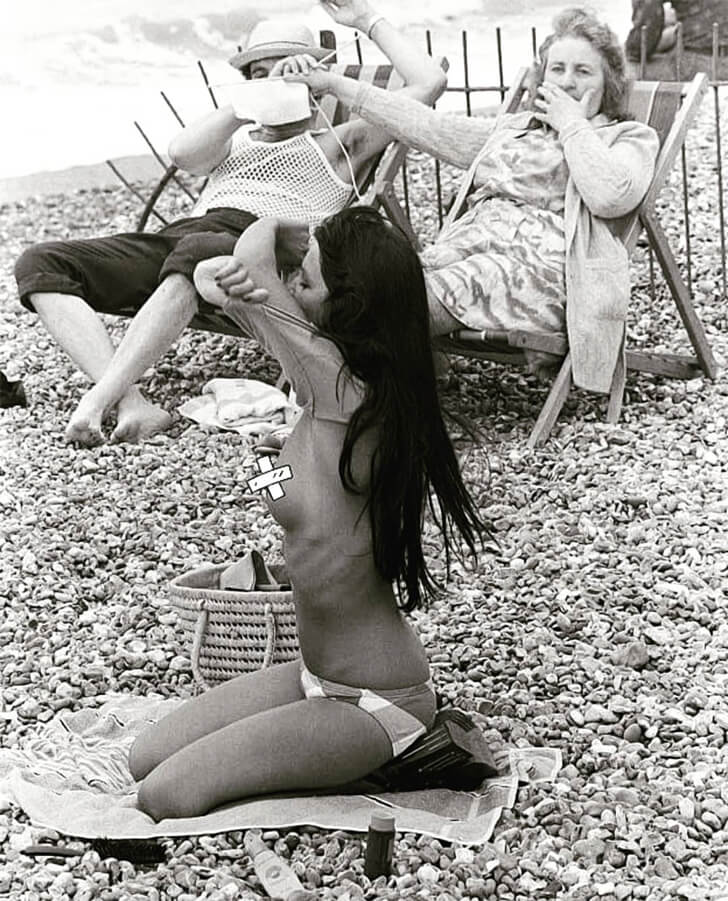
However, there has been a bikini-top backlash, with a younger generation of women covering up due to new feminist priorities, skin cancer concerns, and a rebellion against the objectification of the body.
Next: It was not safe back then.
Schoolgirls In an NYC Subway Car
Captured in 1978 by Willy Spiller, this photograph features a group of schoolgirls inside a subway car with different graffiti in the background. Graffiti emerged as a means for people to express themselves creatively, using the city as their canvas to display skill and ambition.
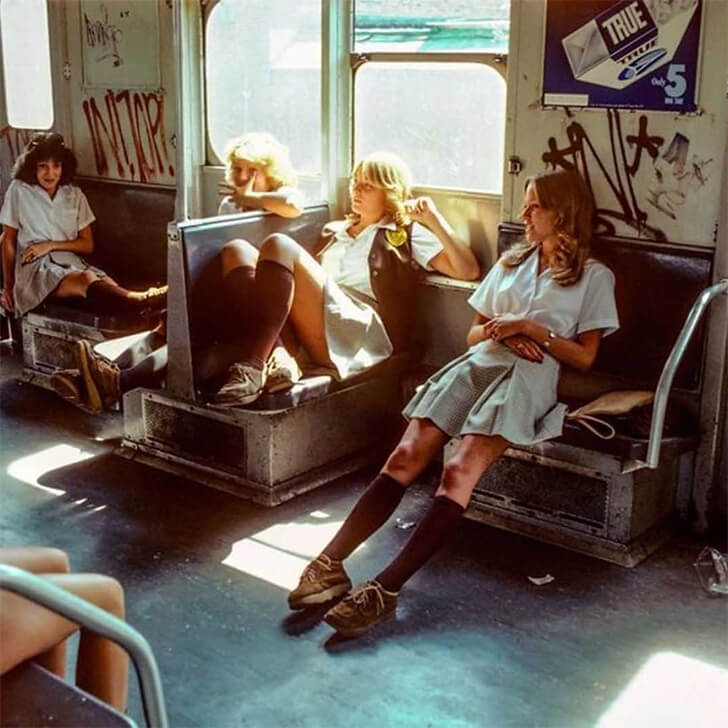
However, middle-class riders saw unauthorized markings as a symbol of their fears about the deteriorating city. Crime rates soared, and urban decay worsened during the 1970s, leading to an unprecedented surge in subway-related crimes. The situation worsened, as there were 250 felonies each week by the 1980s.
Next: It’s bathing time for whom? Jesus!
It’s The Time to Get Refreshed
Nuns are women within the Roman Catholic faith who have dedicated their entire lives to serving Jesus Christ. With a tradition that spans centuries, they play a vital role in the history of the Catholic Church.
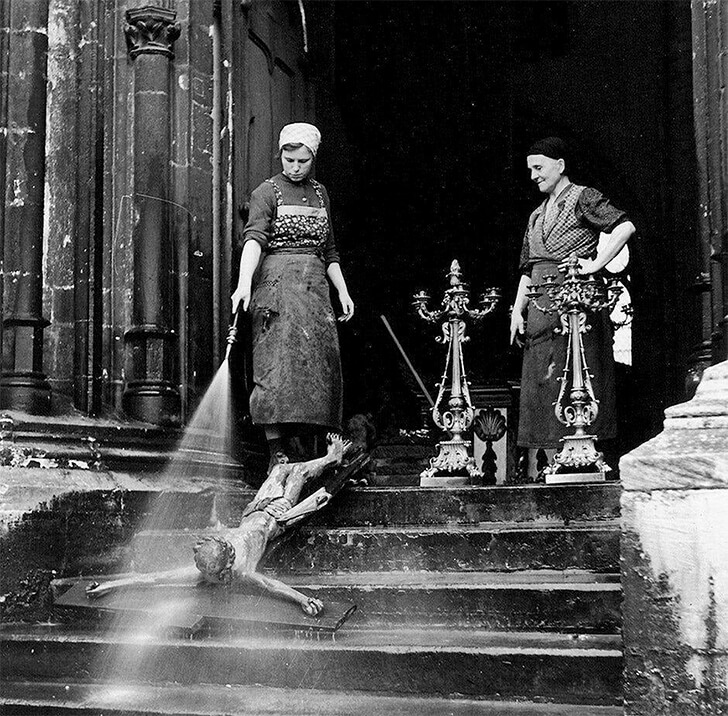
Apart from their spiritual duties and pursuit of the congregation’s mission, they diligently attend to various chores like Mass, None, Vespers, and Compline throughout the day. In a captivating 1939 photograph by Martin Walter, we witness two nuns engrossed in ‘cleaning up Jesus,’ likely one of their routine responsibilities.
Next: This is a photo from Life magazine.
This Is How Teenage Lovers Were in the Late 1940s
In 1947, at a party, the Bounds twins’ group of teenagers enjoyed munching doughnuts and sipping Cokes while occasionally dancing to sentimental music with serious expressions. The LIFE magazine’s focus was on the postwar American teenager’s situation rather than the fact that Betty and Barbara Bounds were identical twins. Here, Barbara is seen dancing with Jimmy Dick on the right-hand side.

Photographer Nina Leen captured the essence of their teenage lives in Tulsa, Oklahoma, covering everything from their hairstyles (shoulder-length) to their accessories (carrying combs in socks) to their interests in boys and parties.
